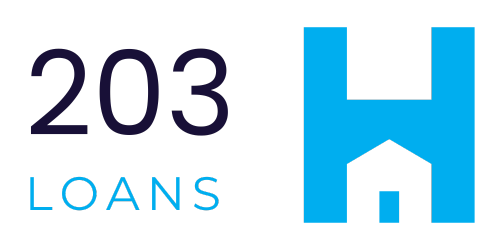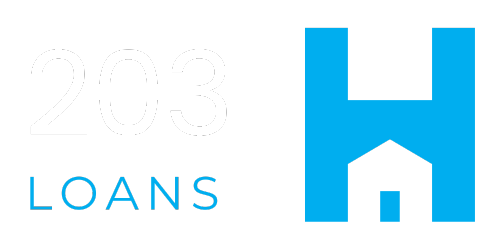Eligibility for Applicants of an FHA 203(h) Loan
One of the main benefits of the 203(h) loan is that it’s designed to be more accessible than traditional home loans. While the eligibility requirements are more lenient in some areas, there are still financial eligibility factors that potential applicants must meet. Let’s explore what financial criteria applicants need to satisfy when applying for the FHA 203(h) loan.
Eligibility for 203(h) Loans
When disaster strikes, it can leave individuals and families not only without a home but also facing significant financial hardship. In such cases, the FHA 203(h) loan can provide a critical lifeline, offering financing to rebuild or purchase a new home. The Federal Housing Administration (FHA) created this program to help homeowners who have suffered damage to their primary residence due to a federally declared disaster, such as a hurricane, flood, wildfire, or tornado.
Ability to Repay the Loan
One of the most important factors in determining eligibility for an FHA 203(h) loan is the borrower’s ability to repay the loan. Lenders assess your debt-to-income (DTI) ratio, which is a measure of how much of your monthly income goes toward paying debts. The FHA generally allows a higher DTI ratio than traditional loans, but it still needs to fall within acceptable limits for approval.
For most FHA loans, a DTI of 31% for your housing costs (including mortgage payment, property taxes, and insurance) and a 43% total DTI ratio (including all monthly debt obligations) is ideal. However, if your DTI is slightly higher, it may still be approved depending on other factors such as credit score and financial stability.
Credit Score Requirements
The FHA 203(h) loan is more flexible with credit scores compared to traditional loans, but there are still minimum credit score requirements. Generally, applicants with a credit score of 580 or higher may qualify for the full 96.5% loan-to-value (LTV) ratio. If your score is lower than 580, you may still qualify for the loan, but you may need to make a larger down payment, or additional documentation of your ability to repay the loan may be required.
Although the 203(h) loan offers some flexibility in this area, applicants with higher credit scores will benefit from better terms, such as lower interest rates and higher approval chances.
Employment and Income Verification
The FHA 203(h) loan also requires applicants to verify steady employment and a stable income. Lenders will typically require recent pay stubs, tax returns, and bank statements to assess your financial situation. If you are self-employed, you may need to provide additional documents, such as business tax returns or profit and loss statements.
A stable employment history and consistent income are crucial factors in showing that you can afford the monthly payments of a mortgage. This is especially important in the aftermath of a disaster, as many homeowners may have lost their jobs or faced reduced incomes during the recovery period.
No Down Payment Required
One of the standout features of the FHA 203(h) loan is that it offers 100% financing, meaning there is no down payment required. This is particularly helpful for homeowners who may have lost their homes and savings due to a disaster. With no down payment requirement, it becomes easier for disaster victims to access financing and rebuild their lives without needing substantial upfront funds.
However, while the lack of a down payment is an advantage, applicants still need to demonstrate that they have the financial stability to repay the loan. This is where your income, employment history, and credit score will play a significant role in the lender’s decision-making process.
Loan Limits
FHA 203(h) loans have specific loan limits that depend on the county in which you are purchasing or rebuilding your home. These limits vary based on the cost of living in the area, with higher limits allowed in high-cost areas. The FHA sets these limits to ensure that the program remains accessible while preventing over-financing of homes that exceed typical market values in certain regions.
Bankruptcy or Foreclosure History
Applicants who have gone through bankruptcy or foreclosure may still qualify for an FHA 203(h) loan, but they may need to meet specific requirements. Typically, a borrower must have re-established credit for at least one year after a bankruptcy or foreclosure before applying. Lenders will look at your recent financial history to assess whether you are now in a stable position to handle a mortgage.
The financial eligibility requirements for the FHA 203(h) loan are designed to ensure that applicants have the ability to repay their loan while offering flexibility for those affected by a disaster. Although the program is designed to be more accessible than traditional mortgages, applicants still need to meet certain financial criteria, such as a reasonable credit score, steady income, and an acceptable debt-to-income ratio.
If you’ve been affected by a natural disaster and need help rebuilding or purchasing a new home, the FHA 203(h) loan may be the solution. Be sure to speak with an FHA-approved lender to assess your eligibility and begin the application process.
For more details on eligibility and to check disaster declarations, visit the official FEMA website.
Figure out if you qualify today
A 203(h) loan is a government-backed mortgage offered by the Federal Housing Administration (FHA) to homeowners who have been affected by a major disaster. The FHA created this program as part of its efforts to support homeowners whose homes have been damaged or destroyed by natural disasters such as hurricanes, wildfires, tornadoes, floods, or earthquakes.

